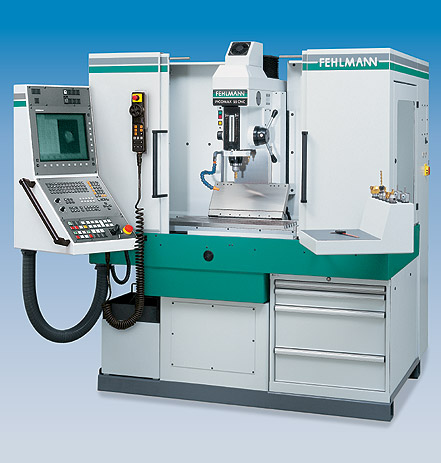We had an extremely interesting talk with Herr Kramer.
One thing that I noticed is that he is strongly against the use of turcite (for a lathe carriage at least, since this is what we talked about).
He told us about the story of a potential customer who asked for a quote for the complete rebuild of a Schaublin 150.
That customer also inquired from competitors and finally choosed on of them, who offered the same rebuild for 3000 euros less than Ruemema. It turns out that that competitor used turcite to compensate the loss of height after bed grinding. Of course, to accomodate the thickness of the turcite liner, the carriage ways also had to be milled.
Ruemema does not operate this way and prefers to re-align the carriage by scraping and tweaking the gears mesh after the bed regrind.
It is my understanding that this is a much more difficult and time consuming process, but it obviously restores the machine's original condition where the cast iron carriage runs directly on the freshly ground bed.
Nevertheless a few monthes later, the customer called Rüdiger to see if something could be done about their "pristine" 150, wich seemingly had developped undue play between the bed and carriage...
Rüdiger answered that due to the milling of the carriage there was nothing he could do anymore, and politely advised them to scrap (not scrape :
scrap) the lathe (makes me think I should have asked him for the adress of the scrapyard)
To be fair after meeting Rüdiger, I can't believe it was a way to "punish" the customer for his poor choice, but more likely due to the fact that he determined what was the RIGHT way of doing things properly, and won't cut the corners nor compromise on quality at any rate.
The best customer of Ruemema has 8 of their machines. That must be saying something





 Oops, I meant "technicians"(not engineers) which is the highest level of non-academic technical education somebody can get in Germany.Of course I agree ,that they are both(technicians and engineers) mandatory for the design and manufacture of these machines...
Oops, I meant "technicians"(not engineers) which is the highest level of non-academic technical education somebody can get in Germany.Of course I agree ,that they are both(technicians and engineers) mandatory for the design and manufacture of these machines...

 Again, I didn't really know what to think of it at the time. But, in fairness, I have no room and little use for any of these, I suspect; so it probably doesn't really matter in the end.... If I want to crib, it would be the fact that I didn't go to Google when it was still in a single building. <sigh> Now, *that* hurts quite a bit... Not sure I want to go there now, though!
Again, I didn't really know what to think of it at the time. But, in fairness, I have no room and little use for any of these, I suspect; so it probably doesn't really matter in the end.... If I want to crib, it would be the fact that I didn't go to Google when it was still in a single building. <sigh> Now, *that* hurts quite a bit... Not sure I want to go there now, though! ).... Schaublin, I believe, is no longer in business (although I remember hearing that assets of the company were being used to manufacture more lathes until they run out). This begs the question, then, of where Herr Kramer is procuring the parts used during the restoration. Some items such as leadscrews and nuts are pseudo-consumables and given the accuracy of his rebuilds, I'm assuming that this means they are automatically replaced. In America at least, it doesn't seem like the 150 or 160 lathes were widely sold so I would think parts would be awfully difficult to source.
).... Schaublin, I believe, is no longer in business (although I remember hearing that assets of the company were being used to manufacture more lathes until they run out). This begs the question, then, of where Herr Kramer is procuring the parts used during the restoration. Some items such as leadscrews and nuts are pseudo-consumables and given the accuracy of his rebuilds, I'm assuming that this means they are automatically replaced. In America at least, it doesn't seem like the 150 or 160 lathes were widely sold so I would think parts would be awfully difficult to source. Maybe you have them confused with Aciera ?
Maybe you have them confused with Aciera ? 